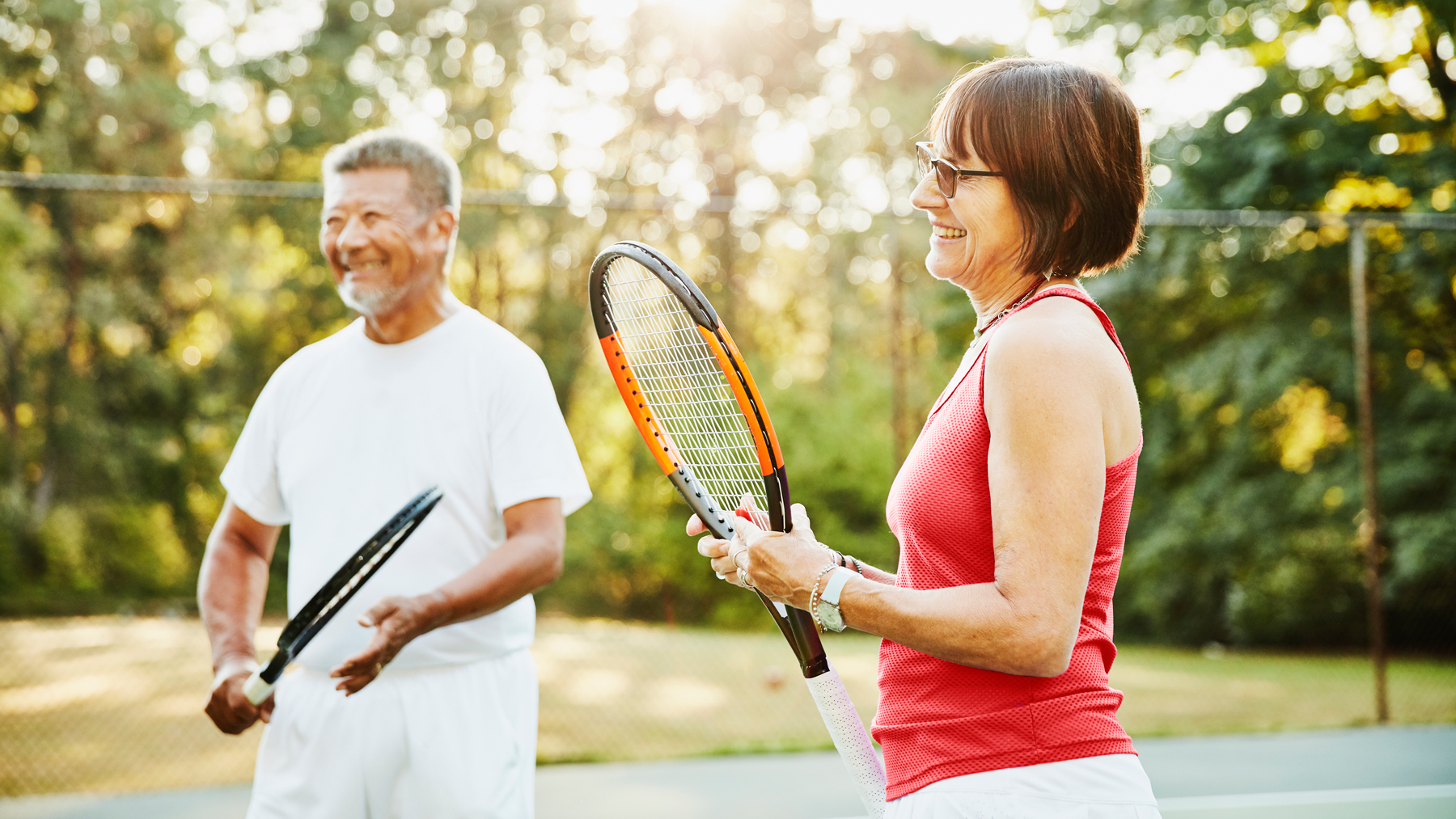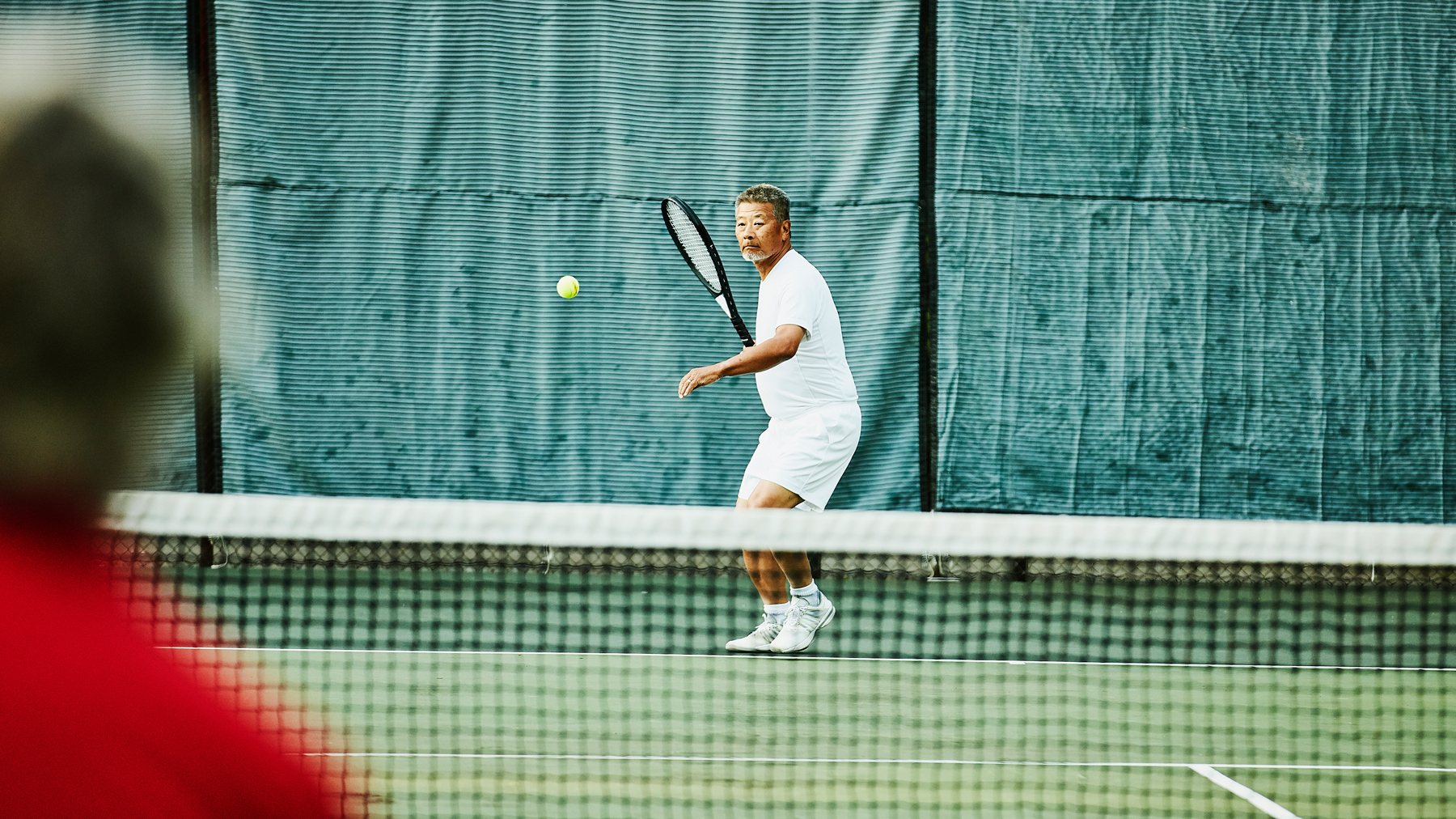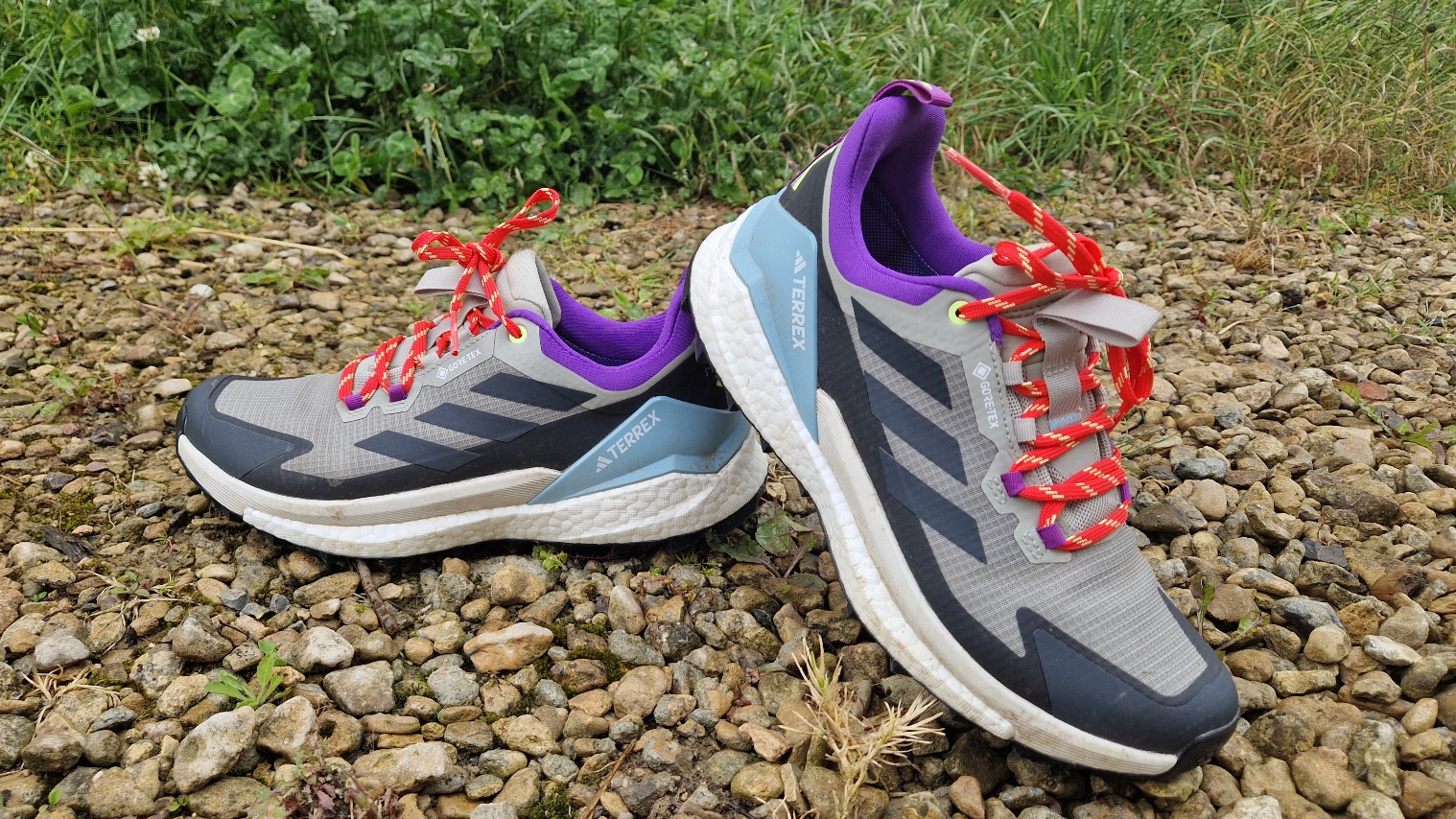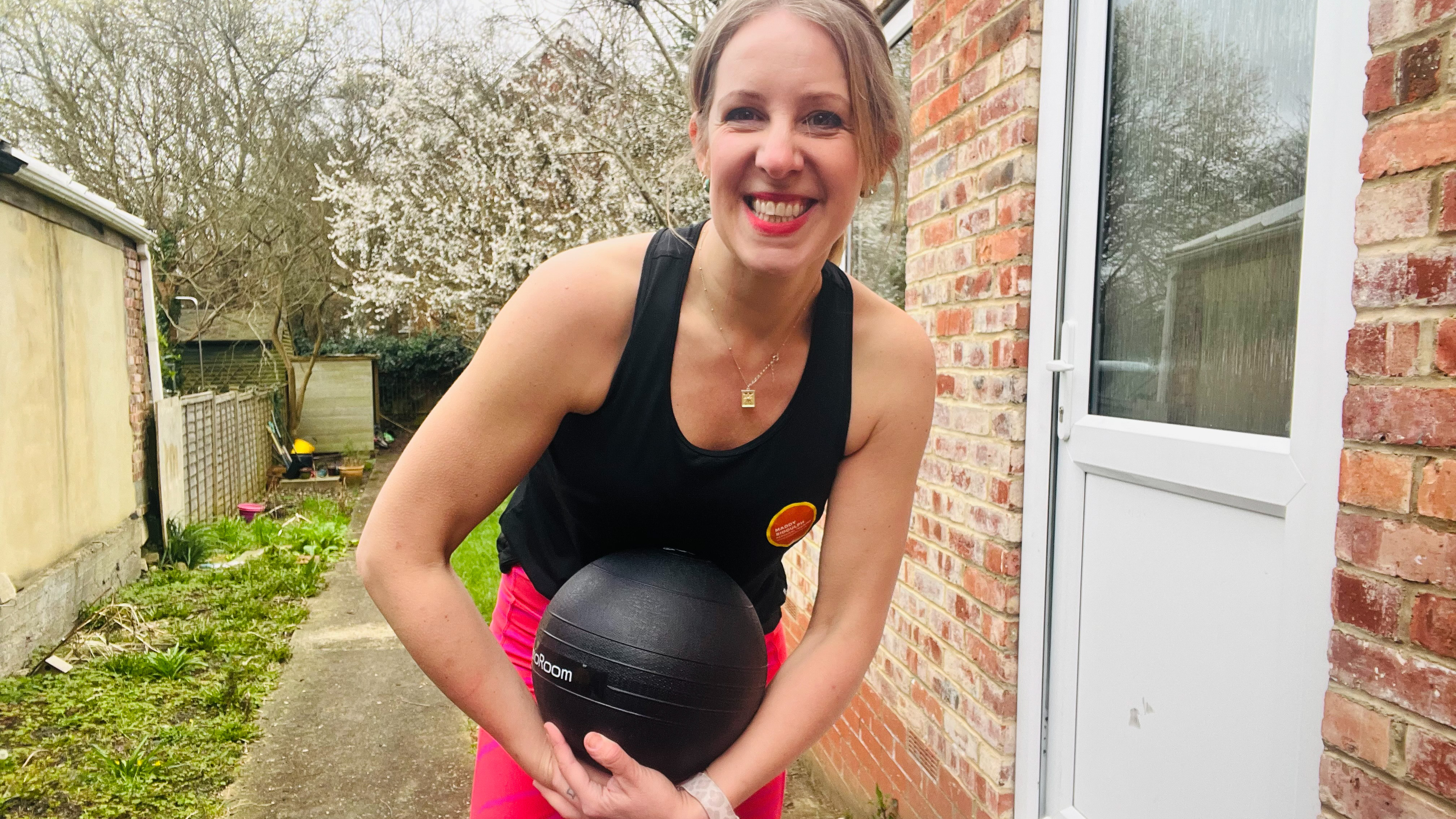What are the benefits of tennis?
What are the benefits of tennis, from mental health to balance and coordination? We’ve done the research and consulted experts to find out more.


What are the benefits of tennis? This is something you may be wondering if you're thinking of taking up a racquet sport. You may have heard that it’s great for cardiovascular fitness, or that it can help you lose weight. But did you know that it has also been proven to ease the symptoms of depression? Or that it’s great for social distancing?
If you’re ready and willing to pick up a racquet, you’ll need a great pair of cross training shoes to ensure you’re stable on the court. Our buying guide has a range of shoes for any workout, including tennis, from comfortable, breathable designs to shoes that are suitable for high-impact exercise.
We’ve taken a look at the research around tennis and consulted an expert head coach, to discover all the health and wellness benefits that tennis brings. We’ve also got the lowdown on whether tennis is bad for your joints, as well as tips on how to start playing and how to choose the right equipment.
What are the benefits of tennis?
If you’re not sure whether tennis is right for you, read on to find out more about the benefits of this recreational sport.
1. Improves balance and coordination:
Tennis requires good hand-eye coordination in order to strike the ball with the center of the racquet for a powerful serve or return.
Before you worry that you don’t have what it takes, remember, practice makes perfect. Doing forehand or backhand drills with your partner and even bouncing the ball off your tennis racquet can help to improve this key skill.
Tennis requires your body to change positions quickly to cover the whole court, as well as keep stable while stretching and returning a ball with force. You’ll be working your core muscles to do this, as well as your glutes, quads, and calves. Over time, this improves your balance and sense of stability on the court, and in everyday life.
Get the Fit&Well Newsletter
Start your week with achievable workout ideas, health tips and wellbeing advice in your inbox.
Research backs this up. A 2015 study looked into the effects of eight weeks of tennis training on a group of university students, half of whom had never played a ball sport. By the end of the training, researchers noticed a significant improvement in balance and hand-eye coordination in all players.
2. Helps with weight loss:
According to the Physical Activity Guidelines for Americans, adults should be aiming for at least 150 minutes of moderate-intensity exercise, such as tennis, every week. Regular physical activity helps you to lose weight and maintain your weight loss.
3. Reduces the risk of cardiovascular disease:
Along with swimming and aerobics, researchers have found that tennis significantly lowers your risk of death from cardiovascular disease, more than running, football, or cycling.
4. Strengthens bones:
Tennis is recommended by the Physical Activity Guidelines for Americans as a great bone-strengthening activity, because it exerts force on the bones as you run and jump, increasing bone growth and strength.
5. Lowers blood pressure:
All aerobic exercise helps to lower your blood pressure, by opening up the blood vessels and improving blood flow through the body.
However, tennis appears to have the edge according to some experts. Researchers have found just one 45-minute session of beach tennis reduced the blood pressure of hypertensive participants for an amazing 24 hours.
6. Reduces risk of musculoskeletal conditions :
Musculoskeletal conditions that affect the bones, joints, muscles, and spine are a common cause of disability in older age, and they are on the increase, according to the World Health Organization.
However, tennis can significantly improve musculoskeletal function, say experts. A 2020 study into tennis players found they had greater upper and lower body musculoskeletal function than people who didn’t play tennis. This could help prevent conditions such as osteoporosis, osteoarthritis, and back or neck pain.
7. Encourages social interaction
Unlike swimming, jogging, or weights, tennis requires you to be more social, whether that’s playing one-on-one or teaming up for a game of doubles with another willing couple. In fact, the USTA (United States Tennis Association) recently surveyed its members and found that they experienced greater social health as a result of playing tennis regularly.
Head coach and former county-level player, Sue Auger, of Better, agrees. “It’s a very social sport. You need to play with someone, you have the option of doubles, there are numerous tennis clubs, tennis leagues available, and beginners can learn in group lessons.”
8. Suitable for all ages and abilities
Tennis really is a game for life. With the youngest players starting at around four and many people playing well into their eighties, it’s a sport that can be learned at any age and adapted to suit your abilities.
It’s never too late to pick up a racquet and start enjoying the benefits. In fact, according to a report published in the Journal of Sport and Health Science, older tennis players report that playing the sport helps them feel like they are aging successfully.
9. Good for mental health:
We all know regular exercise is good for mental health. Just a few weeks of regular exercise can improve the symptoms of anxiety in adults and older adults and reduce the risk of developing depression in children and adults. It can also improve symptoms in people with depression.
Playing tennis regularly throughout your life is also associated with lower rates of depression, especially beyond the age of 45, say researchers.
10. Socially distant
With the pandemic still firmly in the background of everyday life, people who are worried about close-contact sports can relax in the knowledge that they’re unlikely to get within two meters of their opponent at any point. And it’s a game that can be enjoyed in the open air, which reduces the risk of coronavirus and carries many health benefits too.

Is tennis bad for your joints?
While it is possible for tennis to exacerbate knee arthritis in overweight or obese players, as a 2020 study found, it shouldn't cause joint pain in otherwise healthy individuals.
In fact, it can significantly improve joint function. Research has found that tennis players were more likely to have better musculoskeletal fitness in the upper body. This includes the joints, muscles, and connective tissues. It also found that they had improved knee extension strength.
Another study that looked at the range of joint motion in teenage tennis players, found that playing tennis increased the range of movement (ROM) in their joints, including their shoulders, arms, and hips.
Auger points out that even people who have joint pain and stiffness can still play tennis. “There are so many adaptations that can be made so that a game of tennis can be suited to everyone. For example, there is walking tennis, which allows the ball to bounce twice and remain in play and uses a smaller court, which is ideal for anyone with joint problems.”
Auger also advises buying the right kit for your specific ability level and knowing your own limits before you start. “There are numerous types of racquets and balls that can be chosen to reflect a player’s individual needs. You can make a game of tennis as high impact or as low impact as you want.”
Don't forget, some of the best supplements for joints can help to relieve pain or stiffness.
How to start playing tennis
The United States Tennis Association and similar organizations across other regions have lots of tennis programs for adults and children that offer classes, leagues, and more. Whether you’re a beginner, intermediate, or something of a pro, you’re bound to find a program or class to suit you. They also offer wheelchair tennis, social tennis, and adaptive tennis, so that anyone of any age and ability can play.
Look online for local sports clubs, parks, and recreational grounds that have tennis facilities you can hire by the hour with a willing partner. Most have websites where you can check availability and book online. If you’re a complete novice, and you’d like to improve quickly, think about having lessons if you can afford them. A good coach will work with you to improve your technique, spot any problems that could cause injuries, and help you get the most out of every match.
Alternatively, if you're not looking to spend money on classes or court bookings but still want to start learning tennis, find a local open green space where you can practice serving and hitting the ball with a racquet.
Find more articles covering the benefits of exercise such as how incline walking benefits weight loss. Or discover more about nutrition and its impact on your body like what to eat to avoid fatigue.

Sue Auger is Head Coach at a tennis center in the UK. A Level 2 Lawn Tennis Association qualified coach, she is also a former county-level tennis player. She manages the center’s tennis program which spans Walking Tennis, Wheelchair Tennis, children’s and tots programs alongside training elite competitive players.
Joanne Lewsley is a freelance health and lifestyle writer who specializes in evidence-based content. She is a regular contributor to Live Science, Medical News Today, and Fit&Well.
Joanne has worked for some of the web’s biggest brands, including BabyCentre UK, BBC and Lastminute.com. She has also worked with ITV, Sky and Channel 5 in launching flagship TV websites to support broadcaster content.
Previously UK editor at parenting site BabyCentre UK, Joanne led a team of editors and freelance writers to create award-winning health content.
Moving to freelance has allowed Joanne to explore and develop her passion and expertise in creating health, wellness and lifestyle content that is clear, easy to read and based on solid evidence.
She also regularly reviews health and wellness gadgets and tech for a fleet of websites, including Top Ten Reviews and LiveScience.
As well as creating long-form content, Joanne has a keen news sub-editor’s eye, creating compelling news headlines and packages for breaking news on the AOL and Yahoo websites.
In her spare time, she loves visiting the Norfolk Broads close to her home in Norwich, trying to break the 5k barrier on her running, and indulging in her love of live music.
-
 This might be your last chance to get my favourite waterproof walking shoe, and it's 25% off
This might be your last chance to get my favourite waterproof walking shoe, and it's 25% offDeal These Adidas Gore-Tex shoes are the most watertight I've tested
By Lou Mudge
-
 I tried wall balls for 30 days and the results surprised me
I tried wall balls for 30 days and the results surprised meTry this fitness challenge to boost total body strength
By Maddy Biddulph